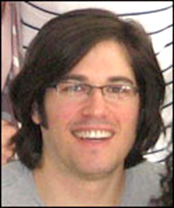Note: Beginning with Fall 2016, The Basic Science program has been combined into the Mentored Scientist Award mechanism - which now has three scientific priority areas for funding: Basic Science, Clinical/ Translational/ Epidemiological/ Behavioral, and Implementation Science.
Below are the awards made under the Basic Science program from 1994 to 2016.
58 Awards
-
The Role of LEDGF in establishing HIV latency in primary CD4 T cells
The Role of LEDGF in establishing HIV latency in primary CD4 T cells

Abstract
One of the most promising strategies for curing HIV infection is referred to as “shock and kill,” whereby latently infected cells are induced to express the virus and subsequently cleared from the body. Understanding how certain cells become latently infected, however, has been a major hurdle towards realizing this strategy. It is known that certain host factors, such as the chromatin bound protein LEDGF, can influence latency by dictating the site of HIV integration and recruiting epigenetic factors.
-
The Role of LEDGF in establishing HIV latency in primary CD4 T cells
The Role of LEDGF in establishing HIV latency in primary CD4 T cells

Abstract
One of the most promising strategies for curing HIV infection is referred to as “shock and kill,” whereby latently infected cells are induced to express the virus and subsequently cleared from the body. Understanding how certain cells become latently infected, however, has been a major hurdle towards realizing this strategy. It is known that certain host factors, such as the chromatin bound protein LEDGF, can influence latency by dictating the site of HIV integration and recruiting epigenetic factors.
-
Transcriptome analysis of HIV latently infected cells
Transcriptome analysis of HIV latently infected cells
Abstract
HIV latency is a major hurdle to overcome in the efforts to cure AIDS. Latently infected cells produce infectious viruses upon cessation of the treatment and immune activation. A challenge to achieving an effective HIV anti-latency therapy (HALT) is that these latently infected cells are very difficult to detect. Although latently infected cells do not express productive viral mRNAs, defective or non-productive viral RNA are expressed and can be detected, which could serve as an excellent biomarker to detect latently infected cells.
-
Transcriptome analysis of HIV latently infected cells
Transcriptome analysis of HIV latently infected cells
Abstract
HIV latency is a major hurdle to overcome in the efforts to cure AIDS. Latently infected cells produce infectious viruses upon cessation of the treatment and immune activation. A challenge to achieving an effective HIV anti-latency therapy (HALT) is that these latently infected cells are very difficult to detect. Although latently infected cells do not express productive viral mRNAs, defective or non-productive viral RNA are expressed and can be detected, which could serve as an excellent biomarker to detect latently infected cells.
-
Rapid Genetic Interaction Mapping of HIV-1 Host Factors in Cultured T-Cells
Rapid Genetic Interaction Mapping of HIV-1 Host Factors in Cultured T-Cells

Abstract
Mapping genetic interactions (GIs) by simultaneously perturbing pairs of genes is a powerful tool for understanding complex biological phenomena. While the bulk of genetic interaction data has previously been generated in simpler model organisms such as yeast and bacteria, we recently developed an experimental platform for generating GI maps in mammalian cells using a combinatorial RNAi strategy, and applied this towards the construction of a genetic interaction map of HIV-1 host factors in cultured HeLa (cervical carcinoma) cells.
-
Rapid Genetic Interaction Mapping of HIV-1 Host Factors in Cultured T-Cells
Rapid Genetic Interaction Mapping of HIV-1 Host Factors in Cultured T-Cells

Abstract
Mapping genetic interactions (GIs) by simultaneously perturbing pairs of genes is a powerful tool for understanding complex biological phenomena. While the bulk of genetic interaction data has previously been generated in simpler model organisms such as yeast and bacteria, we recently developed an experimental platform for generating GI maps in mammalian cells using a combinatorial RNAi strategy, and applied this towards the construction of a genetic interaction map of HIV-1 host factors in cultured HeLa (cervical carcinoma) cells.
-
Genetic Interaction Analysis of HIV-1 Rev Host Regulatory Networks
Genetic Interaction Analysis of HIV-1 Rev Host Regulatory Networks

Abstract
Human immunodeficiency virus-1 (HIV-1), the causative agent of AIDS, remains a global health crisis with millions of new infections each year. HIV-1 hijacks diverse host factor regulatory networks in order to replicate, yet the precise components of these networks and the relationships among these host factors remain poorly characterized. HIV-1 Rev is an essential HIV-1 gene that regulates the export of HIV-1 transcripts. While putative Rev host factors have been described in the literature, few have been definitively linked to Rev function during HIV-1 infection.
-
Genetic Interaction Analysis of HIV-1 Rev Host Regulatory Networks
Genetic Interaction Analysis of HIV-1 Rev Host Regulatory Networks

Abstract
Human immunodeficiency virus-1 (HIV-1), the causative agent of AIDS, remains a global health crisis with millions of new infections each year. HIV-1 hijacks diverse host factor regulatory networks in order to replicate, yet the precise components of these networks and the relationships among these host factors remain poorly characterized. HIV-1 Rev is an essential HIV-1 gene that regulates the export of HIV-1 transcripts. While putative Rev host factors have been described in the literature, few have been definitively linked to Rev function during HIV-1 infection.
-
Quantifying the Role of Stochastic Gene Expression in HIV-1 Latency Establishment and Reactivation
Quantifying the Role of Stochastic Gene Expression in HIV-1 Latency Establishment and Reactivation

Abstract
The primary barrier to eliminating HIV with antiretroviral therapy (ART) is its persistence as a long-lived transcriptionally silent “latent” population. Several host and epigenetic factors affect viral latency and its long-term stability. Underlying these, however, is HIV’s genetic circuitry that drives viral decision-making: large stochastic gene-expression fluctuations driven by HIV’s LTR promoter, together with Tat-mediated positive feedback, execute the latent-or-active decision.
-
Quantifying the Role of Stochastic Gene Expression in HIV-1 Latency Establishment and Reactivation
Quantifying the Role of Stochastic Gene Expression in HIV-1 Latency Establishment and Reactivation

Abstract
The primary barrier to eliminating HIV with antiretroviral therapy (ART) is its persistence as a long-lived transcriptionally silent “latent” population. Several host and epigenetic factors affect viral latency and its long-term stability. Underlying these, however, is HIV’s genetic circuitry that drives viral decision-making: large stochastic gene-expression fluctuations driven by HIV’s LTR promoter, together with Tat-mediated positive feedback, execute the latent-or-active decision.

